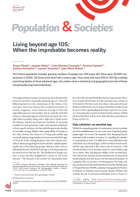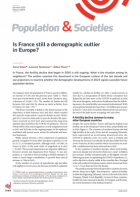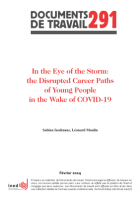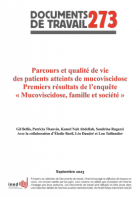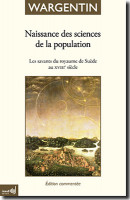
Naissance des sciences de la population
Les savants du royaume de Suède au XVIIIe siècle
Collection : Classiques de l’Économie et de la population
2017, 400 pages[The birth of population science: scientific scholars in the kingdom of Sweden in the eighteenth century, Pehr Willem Wargentin et al.]
Contents
Preface, Peter Sköld
Editors’ note
Nathalie Le Bouteillec and Jean-Marc Rohrbasser
Part I. The Age of Liberty, the time of the pioneers
1. A virtuous economy. The economic context in Sweden at the time of the Tabellverket, Lief Runefelte
2. Inception of the Tabellverket, Nathalie Le Bouteillec
3. The birth of population science in Sweden, Jean-Marc Rohrbasser
Part II. Papers by Pehr Wargentin
I. From 1754 to 1755
II. The 7 papers written from 1767 to 1782
Part III. Other writings published by the Royal Swedish Academy of Sciences, 1743-1779
Pehr Elvius, Jacob Faggot, Gustaf Hedin, Peter Hjelm, Abraham Hülphers, Peter Högström, Elias Lagus, Carl Fredric Mennander, Pehr Osbeck, Edvard Fredric Runeberg, Erik Salander, Olof Strandberg, Jacob Turdfjäll and others
Biographical sketches of the main scholars
[The birth of population science: scientific scholars in the kingdom of Sweden in the eighteenth century, Pehr Willem Wargentin et al.]
In eighteenth-century Sweden, a handful of impassioned and devoted scholars developed the first population counting tools. With the support of the state authorities, they created the Royal Swedish Academy of Sciences, the world’s very first statistics institute.
These scholars, the most prolific of whom was Pehr Wargentin, undertook pioneering studies in demography and statistics over several decades. Sweden was the first country to attempt to document its population statistically over the long term. Its data collection methods were also pathbreaking, and are considered the forerunners of our modern population censuses.
Using these innovative tools, Wargentin drew up the world’s first mortality tables. He was also a great visionary, inventing the very first models of the population pyramid and household unit, and he was the first thinker to analyse the seasonality of births and the importance of migration.
The book retraces this extraordinary scientific adventure, presenting for the first time in French a series of papers by these Swedish scholars, and in so doing making a significant contribution to the history of population sciences. It offers a detailed introduction on the historical context, stressing not only the scholars’ scientific role but also their political weight, and restoring to them their rightful place in history of the sciences, alongside such renowned colleagues as Halley, Linné and Celsius.
Nathalie Le Bouteillec is a researcher at the Faculty of philosophy and human and social sciences of the University of Picardie Jules Verne and associated researcher at INED. She specializes in Northern European family policy, the socio-history of maternity policy, and history and comparison of welfare states.
Jean-Marc Rohrbasser is an INED researcher specializing in history of demographic facts and concepts, history of demography statistics, and financial calculus.
Leif Runefelt is a senior lecturer at the School of Historical and Contemporary Studies of the University of Stockholm. Trained as an economist, he studies interactions between people and economic doctrines in the seventeenth and eighteenth centuries.
Peter Sköld, who prefaced the book, is a Swedish historian and demographer. He directs the Arctic Research Center of the University of Umeå and specializes in historical demography and the demographic transition in Northern European countries.


